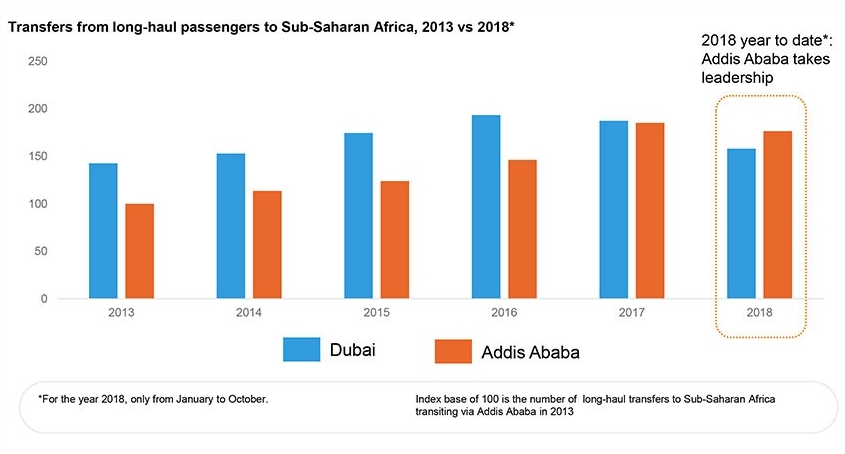Ethiopia an attractive sub-Saharan destination, says study
Addis Ababa has grown its volume of international transfer passengers to sub-Saharan Africa

Nov 30, 2018: Ethiopian capital Addis Ababa has grown its volume of international transfer passengers to sub-Saharan Africa, five years in a row from 2013-2017, revealed the latest findings from ForwardKeys. It also highlights that Addis Ababa’s Bole airport, which is currently being upgraded with a new terminal, at the cost of $345 million, has overtaken Dubai as the leading gateway to the region.
The findings were released by Olivier Ponti, VP Insights, ForwardKeys during a presentation at the World Travel and Tourism Council’s Africa Leaders Forum in Stellenbosch, South Africa.
ForwardKeys which predicts future travel patterns by analysing 17 million flight booking transactions a day, shows the extraordinary rise of Ethiopia as a destination and a transfer hub for long-haul travel to the region. At least some of Ethiopia’s increase in international flight bookings is being attributed to new-found confidence in the wake of reforms carried out by PM Abiy Ahmed since he took office in April 2018. These include signing a peace deal with Eritrea in July; a new e-visa policy introduced in June, which allows all international visitors to apply for a visa on line; and a promise to open Ethiopian market to private investment.
International bookings for Ethiopia, for the period from November 2018 to January 2019, are ahead by more than 40 percent on the same period in 2017 – well ahead of all other destinations in Sub-Saharan Africa.
While visitors to Ethiopia and the rest of sub-Saharan Africa are coming from across the globe, Europe dominates as a source market, according to the findings; it has grown by 4 percent since the start of 2018. By contrast, growth in visitors from the Asia Pacific region is sluggish, just up by 1 percent since the start of the year.
ForwardKeys points out that one of the major opportunities for destinations in the region is to relax visa regimes for international travellers. An example is Chinese market, which is now the strongest in the world by numbers of people and by expenditure. According to the data, liberalised visa policies had a transformative effect on Chinese tourism to Morocco and Tunisia in recent years, dramatically lifting visitor numbers.
For South Africa, 2018 was a challenging year - a water crisis, and the national carrier South African Airways (SAA) facing a difficult business period. But seat capacity is now showing encouraging signs, ready for a new influx of visitors.
Ponti stated, “Sub-Saharan Africa is a market of opportunity. Across the region, carriers are increasing seat capacity on international flights by 6 percent on average; that is an encouraging sign. If more governments follow the go-ahead example set by Ethiopia, including reducing conflict and taking advantage of the benefits that can flow from more relaxed visa policies, I would expect to see a healthy growth in tourism in 2019.”
Source: ForwardKeys


